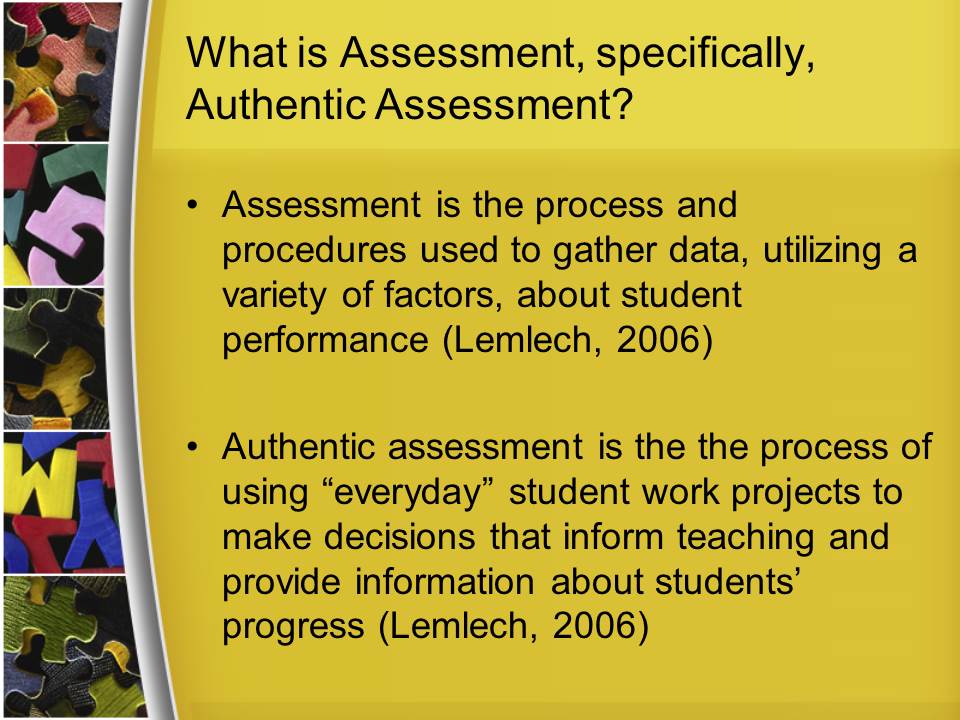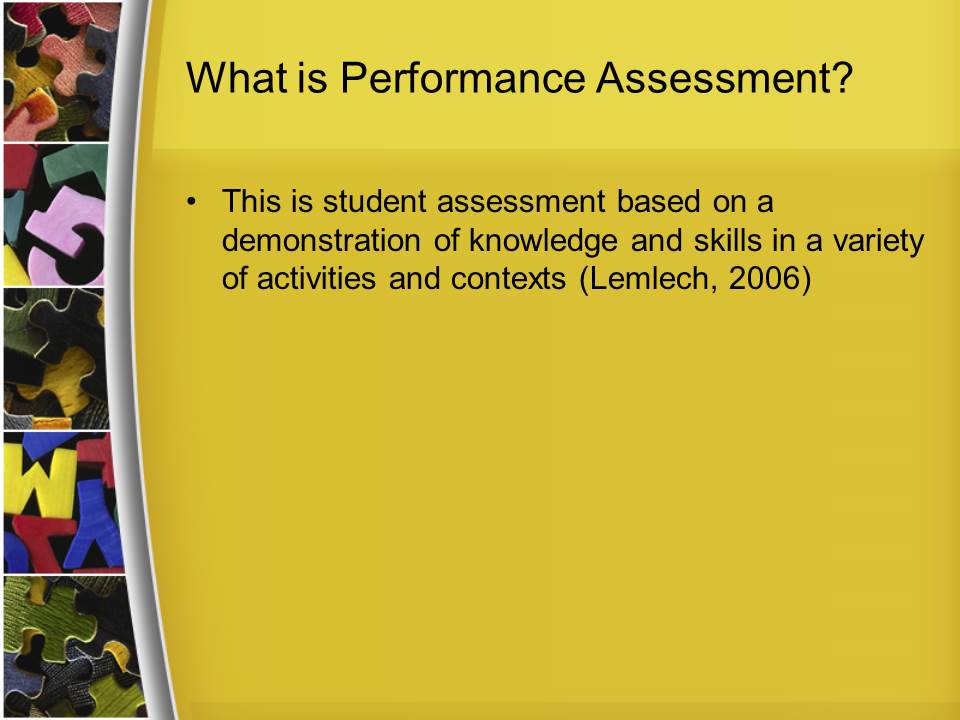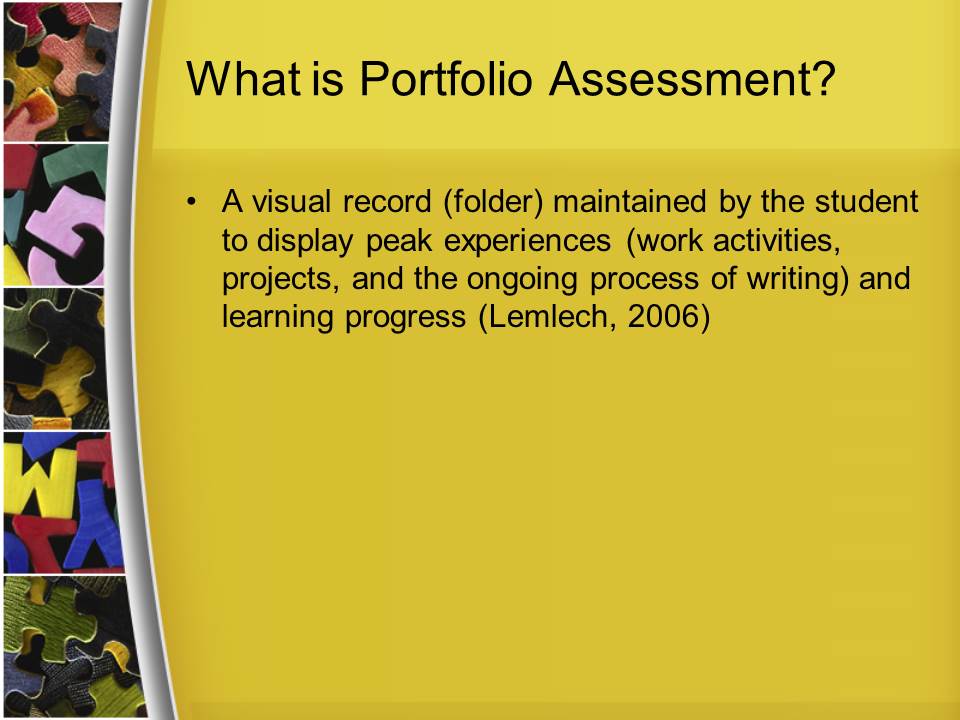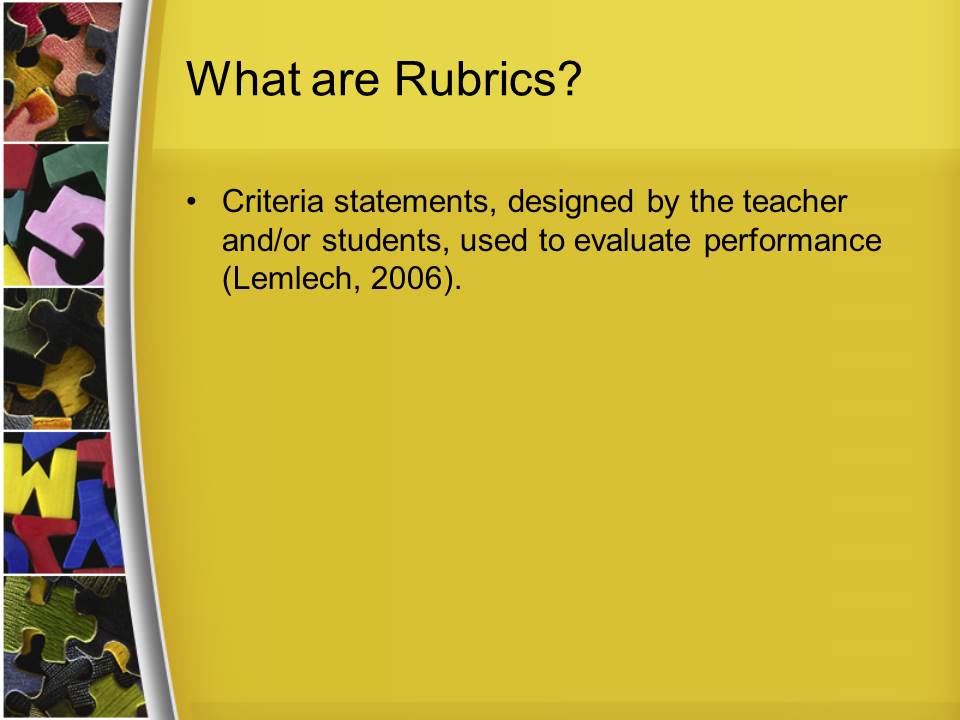What is Assessment, specifically, Authentic Assessment?
- Assessment is the process and procedures used to gather data, utilizing a variety of factors, about student performance (Lemlech, 2006);
- Authentic assessment is the the process of using “everyday” student work projects to make decisions that inform teaching and provide information about students’ progress (Lemlech, 2006).
Assessment tools are supposed measure how much a student has learned from previous lessons. Assessment methods either fall under the more traditional approaches that expect students to regurgitate information previously fed to them or authentic assessment that traverse a wider range of academic disciplines and skills as well as assessment approaches that attempt to evaluate the “whole child” in a wide span of application of his knowledge and abilities (Darling-Hammond et al, 1993).
Wiggins’ (1991) description of what authentic assessment should be is that it involves “engaging problems and questions of importance and substance in which students must use knowledge (and construct meaning) effectively and creatively (p. 39). Thus, it involves the use of higher-order thinking which is far useful in the long run than mere knowledge of information which most traditional assessment methods measure.

Why assess children?
- To determine skills;
- To create a suitable program;
- To determine child’s pacing in comparison to norms;
- To know child’s strengths and weaknesses;
- To create child’s overall profile;
- To resolve a particular problem;
- For diagnostic purposes to gather information for use in ongoing guidance, placement and addressing special needs, if any.

What is Performance Assessment?
This is student assessment based on a demonstration of knowledge and skills in a variety of activities and contexts (Lemlech, 2006).

What is Portfolio Assessment?
A visual record (folder) maintained by the student to display peak experiences (work activities, projects, and the ongoing process of writing) and learning progress (Lemlech, 2006).

What are Rubrics?
Criteria statements, designed by the teacher and/or students, used to evaluate performance (Lemlech, 2006).

Reference
Darling-Hammond, L, Einbender, L., Frelow, F. & Ley-King, J.l (1993) , Authentic Assessment in Practice: A Collection of Portfolios, Performance Tasks, Exhibitions and Documentation.
Lemlech, J.K. (2006) Curriculum and Instructional Methods for the Elementary and Middle School, Sixth Edition Published by Prentice-Hall/Merrill. Pearson Education, Inc.
Wiggins, G. (1991) “Task” Design Ideas, Principles and Guidelines. Geneseo, NY: Center on Learning, Assessment and School Structure.